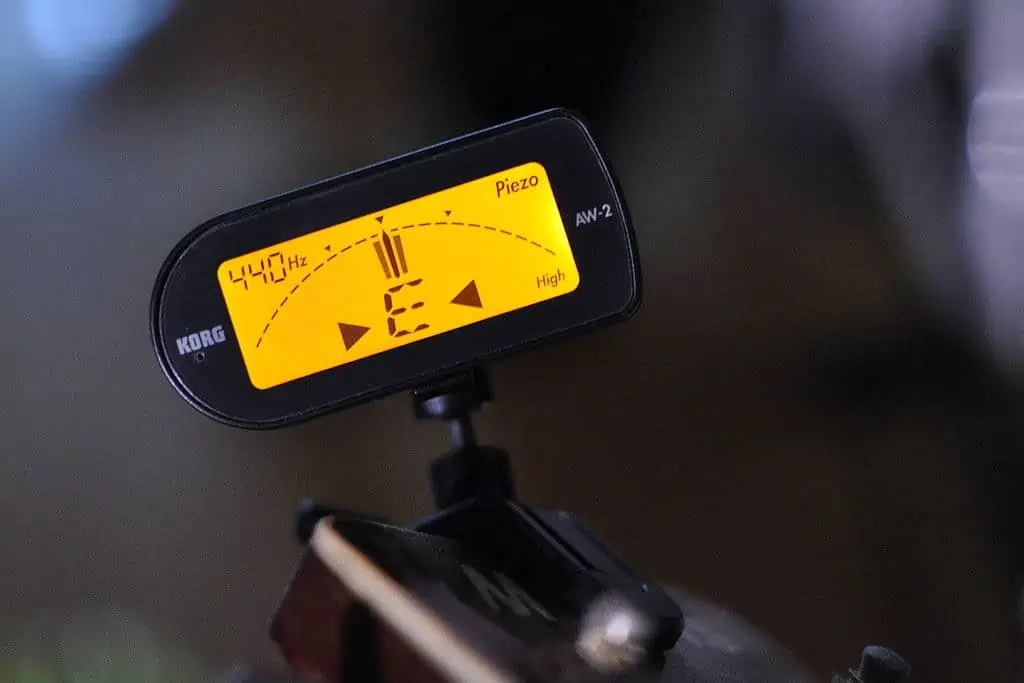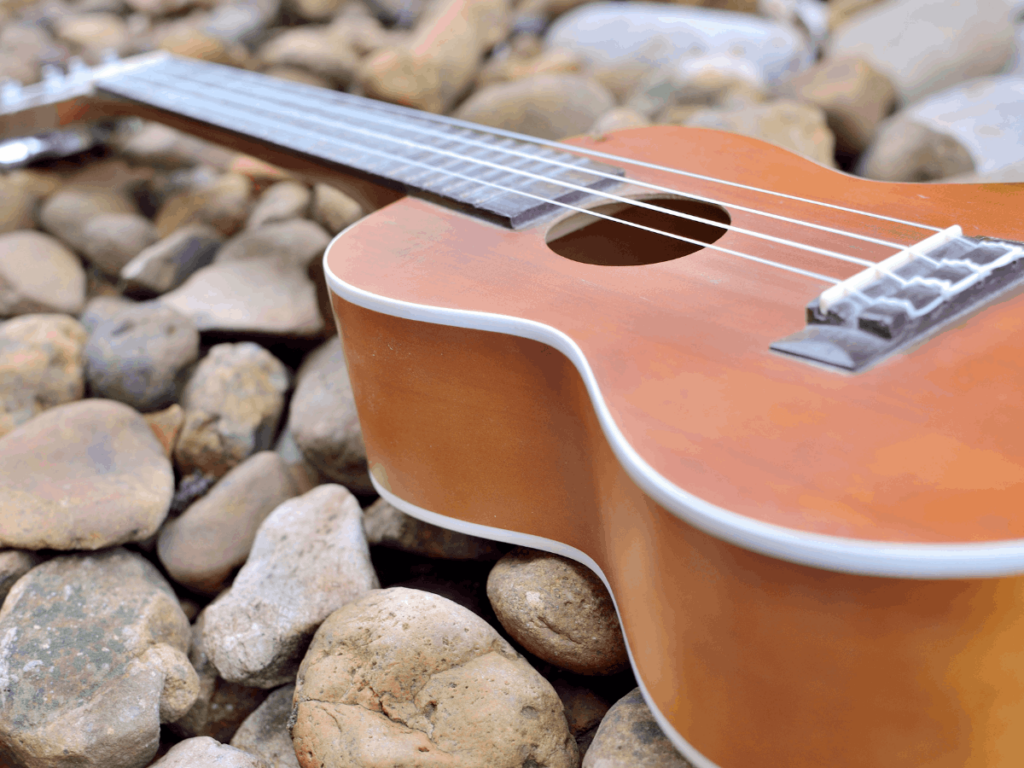Best Ukulele
for Beginners
-
Overall: 9.5/10
-
Best Feature: Crafted from Nato wood for the top, back, and sides.
-
TedScore™: 9.5/10
Best Budget-
Friendly
Soprano Ukulele
-
Overall: 8.5/10
-
Best Feature: The mahogany body produces a well-balanced and clear tone.
-
TedScore™: 8.5/10
Best Versatile
Ukulele
-
Overall: 7/10
-
Best Feature: Produces a warm and full sound with excellent sustain and accurate tuning
-
TedScore™: 7/10
Whether you’re a beginner or a seasoned Soprano Uke player, there’s one thing you need to know – how to tune your ukulele.
These little stringed instruments are affordable, portable, and easy to learn! But trust me, you don’t want to be that person playing an out-of-tune instrument!
In this post, I’ll discover the world of soprano ukulele tuning, and give you all the tips and tricks you need to keep your uke sounding like a dream.
So, grab your ukulele, and let’s get tuning!
The Standard Soprano Ukulele Tuning
The Standard Soprano ukulele tuning is key to playing this beloved instrument.
The four strings of a soprano ukulele are typically tuned to G-C-E-A, with the G string being the highest pitch and the A string being the lowest.
This tuning allows for a wide range of chord progressions and melodies, making it perfect for playing all kinds of music, from traditional Hawaiian tunes to modern pop songs.

It’s important to keep your ukulele in tune to ensure that it sounds its best, and with a little practice, tuning your soprano ukulele can become second nature.
Two Main Methods of Tuning
When tuning ukuleles (whether it’s a soprano, alto, tenor, or baritone ukulele), there are two main methods: tuning by ear and using a tuner. Each method has advantages and disadvantages, so it’s up to you to decide which works best for you.
Tuning a soprano ukulele by ear can initially seem intimidating, but it’s a great way to develop your ear and improve your musical skills. Here’s a step-by-step guide on how to tune a soprano ukulele by ear:
How to Tune a Soprano Ukulele by Ear
1. Familiarize yourself with the sound of each open string by plucking it.
2. Tuning the A string (the top-most and highest-pitched string) by plucking it and comparing its sound to the sound of the next open string down (the E string). Adjust the tuning peg until the A string matches the pitch of the E string when played at the fifth fret.
3. Tuning the E string to the A string. Pluck the A string, and then the E string is held down at the fifth fret. Adjust the tuning peg until the E string matches the pitch of the A string.
4. Tuning the C string to the E string. Pluck the E string, and then the C string is held down at the fourth fret. Adjust the tuning peg until the C string matches the pitch of the E string.
5. Tuning the G string (the bottom string) to the C string. Pluck the C string, and then the G string is held down at the second fret. Adjust the tuning peg until the G string matches the pitch of the C string.

Using a tuner is one of the easiest methods to tune your ukulele and produces accurate results. Here’s a step-by-step guide on how to tune a soprano ukulele with a tuner:
How to Tune a Soprano Ukulele with a Tuner
1. First, ensure that your tuner is properly calibrated and set to the correct settings for the soprano ukulele.
.
2. Play the G-string and observe the tuner’s display. Your goal is to adjust the tension on the string until the tuner shows a green light or indicates that the sound is “in tune”.
3. In that order, follow the same process for the C-string, the E-string, and the A-string.
4. Tuning the C string to the E string. Pluck the E string, and then the C string is held down at the fourth fret. Adjust the tuning peg until the C string matches the pitch of the E string.

3 Recommended Soprano Ukuleles
Kala KA-15S Mahogany Soprano Ukulele

FEATURES:
- The all-mahogany body
produces a rich and delightful sound.
-The silky-smooth satin
finish ensures comfortable playing.
- Experience a lively, warm, and responsive ukulele tone.
- The classic soprano size offers a recognizable high-end shimmer.
- None!
When you click ‘Check Price’, you’ll see there are loads of great places to buy this item. Our personal favorite is Sweetwater for the US, and Thomann and Gear4Music for the UK & Europe.
They are the largest music retailers, with excellent customer service, competitive prices, really fast shipping, and the longest guarantees.
The professional musician who wrote this article combined many things,
from the product build, manufacturer’s reputation through to feedback
from other users, to create our famous TedScore™.
Lanikai LU-21 Standard Soprano Ukulele

FEATURES:
- Crafted from Nato wood
for the top, back, and sides.
- Features geared tuners
for accurate tuning.
- Produces a warm and full sound with excellent sustain.
- Offers a high-quality instrument at an affordable price.
- The strings may require replacement to enhance the overall sound and playability.
When you click ‘Check Price’, you’ll see there are loads of great places to buy this item. Our personal favorite is Sweetwater for the US, and Thomann and Gear4Music for the UK & Europe.
They are the largest music retailers, with excellent customer service, competitive prices, really fast shipping, and the longest guarantees.
The professional musician who wrote this article combined many things,
from the product build, manufacturer’s reputation through to feedback
from other users, to create our famous TedScore™.
Cordoba 15SM Soprano Ukulele

FEATURES:
- The mahogany body
produces a well-balanced and clear tone.
- Designed for comfortable
playing, particularly for young musicians.
- Lightweight and portable, perfect for travelling.
- Delivers an exceptional playing experience and an exquisite sound.
- The tuning pegs may need occasional adjustments to maintain proper tuning over time.
When you click ‘Check Price’, you’ll see there are loads of great places to buy this item. Our personal favorite is Sweetwater for the US, and Thomann and Gear4Music for the UK & Europe.
They are the largest music retailers, with excellent customer service, competitive prices, really fast shipping, and the longest guarantees.
The professional musician who wrote this article combined many things,
from the product build, manufacturer’s reputation through to feedback
from other users, to create our famous TedScore™.
What Makes the Soprano Ukulele Different From Others
The soprano ukulele is different from other ukuleles in a few key ways. First and foremost, it’s the smallest size of the ukulele, with a scale length of around 13 inches.
This gives it a bright, lively sound, perfect for playing traditional Hawaiian music.
Another thing that sets the soprano ukulele apart is its tuning. It allows for a wide range of chord progressions and melodies, making it perfect for playing all kinds of music.
Finally, the soprano ukulele is often the most affordable option for ukuleles. Its small size and simple construction make it an accessible instrument for beginners and those on a budget.
Brief History of the Soprano Ukulele
The soprano ukulele is a popular instrument that’s a member of the guitar family.
It originated in Portugal and was popularized in Hawaii by Madeiran immigrants in the 19th century. It has four strings, and its size and volume vary depending on the construction.
Ukuleles come in four sizes: soprano, concert, tenor, and baritone.

The soprano size is the original and most commonly associated with the classic Hawaiian sound. The word “ukulele” roughly translates to “jumping flea,” possibly due to the movement of the fingers on the strings.
The ukulele was popularized in the United States during the Panama-Pacific International Exposition in San Francisco in 1915.
Soprano Ukulele Tuning
A Recap
The standard soprano ukulele tuning is in C6. The strings sound out using the notes G4-C4-E4-A4. Don’t worry if that sounds like gibberish to you – know that it’s all about getting those strings to sound just right!
Now, if you feel confident in your musical abilities, you can try tuning by ear. It’s all about starting with a reference note of middle C and manipulating the strings until they’re all at their intended pitches.
But if you’re not quite there yet, don’t worry – plenty of tuners can do the job for you!
And here’s a pro tip – you should aim to tune your ukulele every time you play it, ideally every 15 minutes. That way, you’ll always sound your best!
So whether you’re a novice or a pro, plenty of tools are out there to help you tune your uke.
And with a little practice, you’ll develop a musical ear for a pitch that will make tuning a breeze!
Wait, there’s more!!!
Discover the Top 10 Best Ukuleles with our in-depth buying guide, featuring expert reviews and buying tips for every player level!
FAQ's
The four strings on which tune a ukulele: soprano ukulele are tuned to the notes G, C, E, and A. This is often called “standard” tuning and is the most common for soprano, concert, and tenor ukuleles.
Soprano ukuleles are typically tuned to the same standard tuning as others, GCEA. However, depending on the player’s preference, some soprano ukuleles may be tuned differently, such as to a D or baritone tuning.
The tuning for the four-string ukulele is typically GCEA, with the G string tuned an octave higher than expected. This tuning is often called “standard” and is used for soprano, concert, and tenor ukuleles.
There is no “classic” standard ukulele tuning yet, as the instrument has evolved and has various sizes and tunings. However, the standard tuning for a soprano, concert, and tenor ukulele is GCEA.











Absolutely love the section on the history of the soprano ukulele. It’s so important to understand the roots of the instrument we love. I’ve been playing for years, and I always find it fascinating to learn more about where it all started. People often overlook the cultural significance behind these instruments, but it’s key to truly mastering it. Keep up the great content!
so like, how do I know if my tuner is set right for a soprano uke? kinda lost tbh and dont wanna mess my new uke up
I feel like you’re oversimplifying soprano ukulele tuning. It’s more art than science. Anyone else think so?
Frank, can you share some tips on the ‘artistic’ side of tuning?
Agreed, it definitely takes a bit of feel and not just a mechanical approach.
Just picked up my first ukulele, and this guide was super helpful! Thanks, Lewis Turner, for the easy-to-follow tuning tips. Excited to start playing!